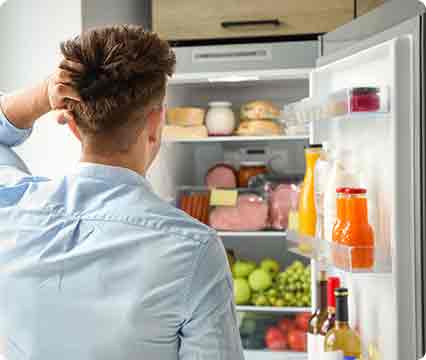Fight, flight, – Or grab a bite! Trait emotional and restrained eating style predicts food cue responding under negative emotions
This 2020 study explored emotional overeating by exposing participants to a personalized emotion induction while showing images of palatable foods, and assessing the effect of emotion condition (negative, neutral) and individual differences (self-reported trait emotional and restrained eating) on outcome variables such as facial expression, brain reactivity, valence (attractiveness) and desire to eat. The results revealed increased attractiveness and appetitive reactions to palatable foods in individuals with higher emotional eating scores in the negative condition, but the opposite effect in those with lower emotional eating scores. A similar pattern was observed for desire to eat ratings among participants who showed greater response to the emotion-inducing technique, indicating a dose-response interaction. Furthermore, increased brain activation was apparent among restrained eaters in the negative condition when viewing images of foods compared to objects. The appetitive reactions seen in emotional eaters backed up emotion regulation theories, while the brain activity towards food compared to objects among restrained eaters support cognitive theories. The authors believe further investigation is necessary, particularly on eating disorders with emotion regulation difficulties. [NPID: mood, emotional eating, palatable foods, appetite, emotions regulation, eating disorders]
Year: 2020
 Navigation
Navigation






